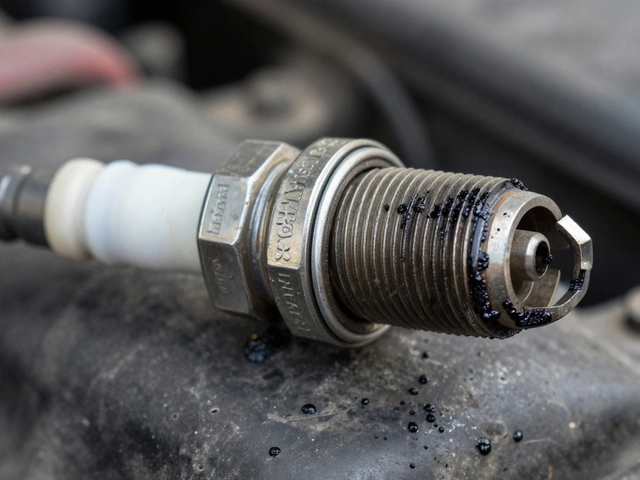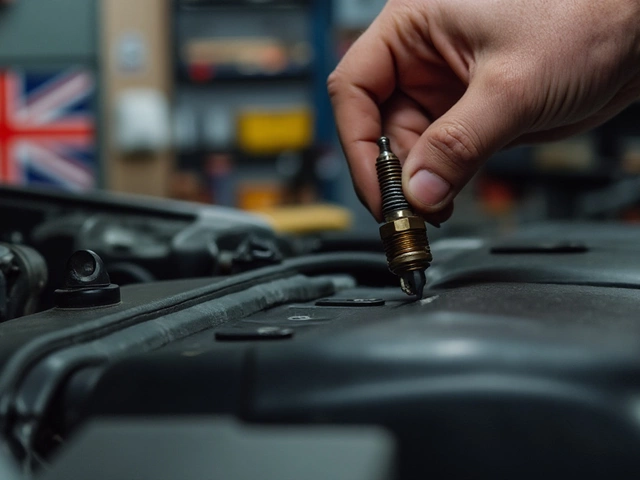Picture this: you notice a sweet smell under the hood or a little green puddle on your driveway. That’s your radiator trying to get your attention—ignoring it could toast your engine in minutes. Most folks don’t realize just how fast a cracked radiator can go from an annoyance to full-on disaster. Engine overheating is unforgiving. The longer you wait, the bigger the headache and the bill.
So, what do you do if you spot a crack? First, don’t reach straight for the miracle-in-a-bottle sealant and call it a day. Sure, radiator stop-leak can help in a pinch and might get you to the nearest repair shop, but it’s not a “forever” fix—especially if the crack is more than a hairline or if you see coolant spraying. That quick fix can clog heater cores or sensors too. The most reliable solution is always to repair the crack using the right technique for your radiator material—plastic, aluminum, or copper-brass. Sometimes that means patching. Other times, there’s no getting around a full replacement.
- Spotting a Cracked Radiator: Warning Signs and Quick Checks
- Quick-Fix Solutions: What Can You Do Right Now?
- Permanent Repairs: When to Call in the Pros or Replace
- Tips to Avoid Another Radiator Disaster
Spotting a Cracked Radiator: Warning Signs and Quick Checks
Don’t trust your car’s temperature gauge alone—by the time that red needle hits high, you might’ve already done serious damage. Spotting a cracked radiator early is all about knowing what to look for and not brushing off the weird little signs.
The telltale signs aren’t always dramatic. Here’s what to keep an eye (and nose) out for:
- Coolant leak under the car: A green, orange, or pink puddle under the front of your vehicle is a classic tip-off. Even a few drops shouldn’t be ignored.
- Sickly-sweet smell: Coolant gives off a sugary, syrupy odor when it leaks. Smelling this in the cabin is usually trouble.
- Engine overheating: Sure, the temp gauge counts, but also watch for steam or your engine fan running nonstop.
- Low coolant levels: If you’re topping off your coolant more often, yet can’t find an obvious leak, the radiator might have a hairline crack.
- Rust or discoloration: Check the radiator’s seams and tanks for crusty deposits or weird stains—these usually show up around slow leaks.
Want a quick check? When your engine is cold, run your hand along the bottom of the radiator and hoses (no gloves needed). If your fingers get slimy or sticky, there’s a leak somewhere. Just don’t ever open the radiator cap when it’s hot unless you like getting burned—seriously, people have ended up in the ER.
"A cracked radiator almost always means trouble. Even a small leak drops your coolant level and takes your cooling system down fast," says Mark Atkins, master technician at AAA Auto Repair.
It helps to know what kind of radiator you have. Most modern cars use plastic and aluminum combos, while older models might have copper-brass radiators. Cracks usually show up where plastic tanks meet metal cores.
| Sign | Chance It's a Radiator Crack |
|---|---|
| Puddle under nose of car | 85% |
| Overheating after top-off | 75% |
| Sweet smell in cabin | 60% |
| Crusty deposits on seams | 90% |
If you spot any of these, don’t gamble with your engine. Even a “minor” cracked radiator can spiral into blown head gaskets or warped cylinders way faster than people think.
Quick-Fix Solutions: What Can You Do Right Now?
If you’ve just found a crack in your radiator, you’re probably thinking, “How do I stop the leak so I don’t destroy my engine?” Stop worrying—there are a few things you can do right away while you figure out your long-term game plan.
The classic stopgap is a radiator sealant. These products are sold everywhere from auto parts stores to big-box chains. The idea is simple: pour the liquid into your radiator or coolant tank, and it flows to the crack, sealing it as it reacts with air. It’s super quick, can cost less than $15, and might keep you rolling for a few days to a few weeks.
- Always make sure the engine is cool before opening the radiator cap. Hot coolant is under pressure and can burn you fast.
- Read the label—some sealants work only with certain coolant types. The main brands are Bars Leaks, BlueDevil, and K-Seal.
- After using sealant, keep an eye on the temperature gauge. If it goes higher than normal, you probably have a bigger problem.
Duct tape is the stereotype, but honestly, it only helps on external cracks you can reach, and even then, it’s just for a couple miles to limp to a shop. If you try it, dry the area first, then wrap the tape as tightly as possible.
For bigger leaks or more peace of mind, you can try a two-part epoxy specifically made for plastics or metals, depending on what your radiator is made of. Clean the area, sand it a bit, mix the epoxy, and spread it over the crack. Wait about 30 minutes before refilling coolant. Is it perfect? No. But sometimes it’ll hold well enough to get you home.
Here’s a quick comparison of these fixes:
| Fix | Average Cost | Time to Apply | Expected Lifespan |
|---|---|---|---|
| Radiator Sealant | $10–$20 | 5 minutes | 1 day–several weeks |
| Epoxy | $6–$12 | 30–45 minutes | 1–3 weeks |
| Duct Tape | $3–$8 | 5–10 minutes | Minutes–a few hours |
Remember, none of these are a permanent cracked radiator solution. They’re just to get you safely off the road or through the week until you can get a real fix. And if you see coolant spraying out or your temp gauge hits red, stop right away—no quick fix will save you from a cooked engine.

Permanent Repairs: When to Call in the Pros or Replace
Let’s be real, not every cracked radiator can be patched up in your driveway. When it comes to permanent repairs, you’ve got two real choices: hands-on DIY or professional help. The path you pick depends mostly on the type and size of the crack, the radiator material, and how much you rely on your ride getting you home.
Radiators come in a few flavors—plastic tanks with aluminum cores are everywhere these days, but some older models use copper-brass. Here’s the deal: plastic cracks pretty easily, and no amount of glue or epoxy will make it brand new. You can try a two-part plastic epoxy—it’s cheap, and it’ll work if you clean and rough up the area first. But if you hear hissing, see coolant bubbling out, or find the crack is over two inches? Don’t mess around; those repairs rarely hold for long.
Aluminum and copper-brass radiators can be soldered or welded. That job needs the right tools and a steady hand. A shop might charge you $80–$150 for a pro solder on a small leak, which might sound steep but beats frying your engine. If you spot multiple cracks, or the core itself is leaking, that’s replacement territory—no patching will save it for long.
Here’s a simple breakdown of when to repair or replace:
- Small hairline cracks on plastic: Try epoxy as a starter fix.
- Cracks over 2 inches, multiple leaks, or leaks in the core: Replace.
- Aluminum/copper-brass small leaks in accessible spots: Consider soldering/welding if you’ve got the skill, else go to a shop.
Replacement costs vary by car, but check this table for a rough idea:
| Repair Type | DIY Cost | Shop Cost | Pros | Cons |
|---|---|---|---|---|
| Plastic epoxy | $10–$25 | $80–$150 | Cheap, quick | Short-term, often fails |
| Solder/Weld | $20–$50 (tools/materials) | $80–$200 | Lasts longer, pro-grade fix | Risky for first-timers |
| New radiator | $100–$300 | $300–$850 | Restores full reliability | More labor, costlier up front |
One mistake a lot of people make? Patching a dying radiator over and over, hoping for miracles. If you’re seeing frequent leaks, sludge in your coolant, or rust around the seams, stop burning money on fixes. Swap out the radiator and get peace of mind. Bonus tip: Keep an eye on your temperature gauge after any repair—one overheat can undo all your hard work.
Tips to Avoid Another Radiator Disaster
Most radiator troubles sneak up on you—usually because folks forget about maintenance until their dashboard light goes nuts. Want to dodge another cracked radiator? A little attention goes a long way.
First off, check your coolant level every month. Pop the hood, find the overflow tank, and make sure the fluid sits between the marks. Low coolant doesn’t just risk overheating—it makes your radiator work double-time and puts extra stress on weak spots. If you keep topping off coolant, but it keeps disappearing, that’s waving a big red flag for leaks.
Flush out the cooling system every 30,000 miles or every two years, whichever comes first. Old coolant breaks down and forms sludge—this grime chews up seals and lines, leading to the classic cracked radiator problem. A flush kit only costs about twenty bucks and takes less than an hour if you’re handy.
Use the right coolant. Don’t just buy the cheapest jug at the store—grab what your car’s manual recommends. Mixing coolants or using the wrong type can wreck your radiator from the inside out. And never refill with only water unless it’s a dire emergency; plain water doesn’t protect against rust or boiling over.
Keep an eye on your radiator cap. If it looks rusty or the rubber seal is shot, replace it. The cap keeps the system pressurized; a busted cap messes with the pressure and lets air sneak in, which turns into hot spots and cracks.
Also, watch for bugs and debris stuck in the radiator fins. A simple spray with a garden hose (aim straight, not sideways) can clear out clogs and keep airflow moving. Poor airflow makes your car heat up faster, especially when you’re crawling in summer traffic.
- Don’t ignore the temperature gauge—shut down if it starts to rise unexpectedly.
- Replace hoses and clamps if you see bulges, cracks, or leaks.
- Check for visible cracks or white stains on the radiator itself—those are salt deposits from dried coolant.
- Try not to push your car too hard if you already know the cooling system is iffy, especially on hot days.
If you’re ever in doubt, grab a flashlight, check for leaks or stains, and ask a mechanic for a pressure test. A small fix now can stop a huge repair—or a fried engine—later on.






